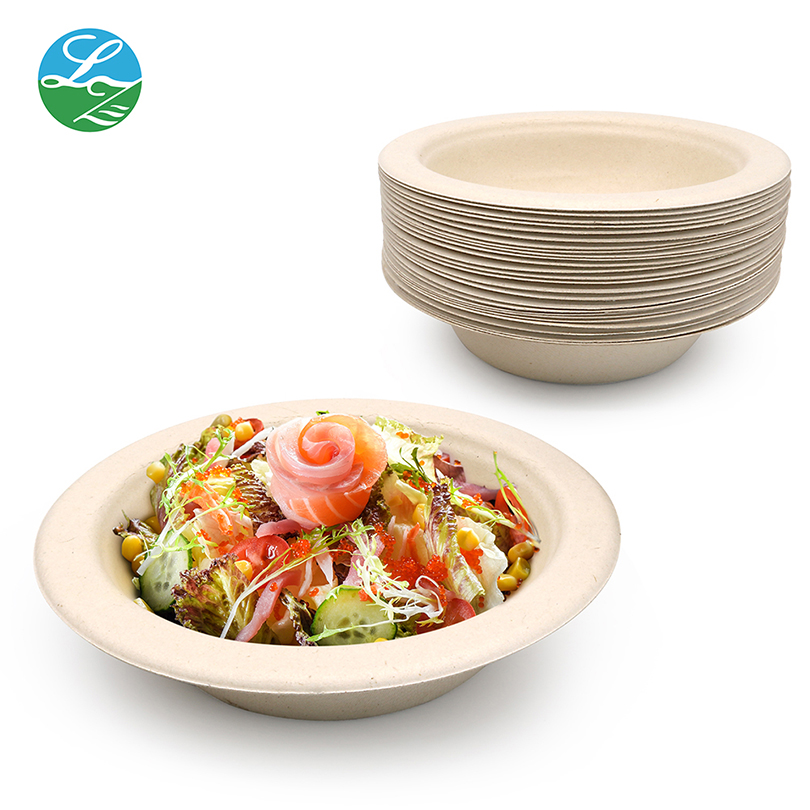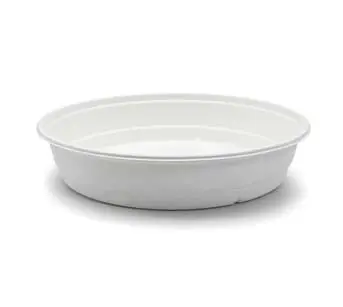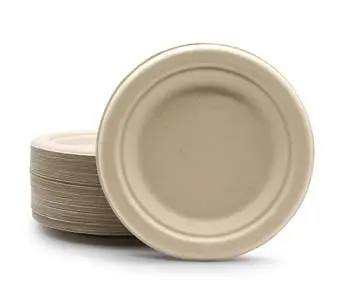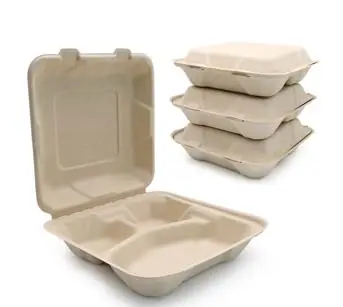Disposable bowls have become an indispensable part of our modern lifestyle, providing convenience and practicality in various settings. These versatile vessels are designed to hold a capacity of 16 ounces, making them ideal for serving a variety of foods. Whether it's a hearty soup, a refreshing salad, or even a delectable dessert, 16 oz disposable bowls offer the perfect size for individual portions.
For environmentally conscious individuals and businesses, choosing disposable biodegradable bowls is a sustainable option that combines the convenience of disposability with the commitment to reducing environmental impact. These 16 oz disposable bowls offer the perfect size for various food options, ensuring a practical and eco-friendly solution for serving meals while minimizing waste.
Definition of 16 oz Disposable Bowls

At its core, a 16 oz disposable bowl is a single-use container crafted from different materials like paper, plastic, or foam. These bowls are specifically designed to be lightweight yet sturdy enough to hold hot or cold food items without compromising their integrity. With their ample capacity and functional shape, these bowls provide an efficient and convenient solution for serving meals on-the-go or in situations where traditional dishware is not feasible.
Importance and Versatility of Disposable Bowls in Various Settings
Disposable bowls have found their place in numerous settings due to their unparalleled versatility. In the foodservice industry, they play an instrumental role in restaurants, cafes, food trucks, and catering events.
By offering easy portion control and minimizing cleanup time and effort, disposable bowls enable establishments to efficiently serve customers with speed and efficiency while maintaining hygiene standards. Furthermore, the importance of disposable bowls extends beyond professional settings; they also cater to household needs.
These portable vessels are perfect companions for outdoor picnics or activities where carrying reusable dishes is impractical. Additionally, busy individuals often rely on 16 oz disposable bowls for quick meals at home or on-the-go due to their convenience factors such as minimal cleanup and no need for storage space.
The versatility of these containers goes beyond just serving food; they can also be repurposed creatively for arts and crafts projects or as storage containers for small items like beads or office supplies. With their broad range of applications, it's no wonder that 16 oz disposable bowls have become an essential commodity in today's fast-paced world.
In this article, we will delve deeper into the intricacies of 16 oz disposable bowls. We will explore the various materials used in their manufacturing process, examine their design features, and discuss the environmental impact associated with their use.
Additionally, we will highlight alternative options such as reusable and compostable bowls to provide a comprehensive understanding for readers seeking sustainable alternatives. Join us on this journey as we uncover the hidden facets behind these seemingly simple yet indispensable vessels.
Overview of 16 oz Disposable Bowls
Materials used in manufacturing disposable bowls
When it comes to the manufacturing of 16 oz disposable bowls, several commonly used materials stand out: paper, plastic, and foam. Each material brings its own set of advantages and disadvantages to the table.
Paper:
Paper-based disposable bowls are often made from renewable resources like wood pulp. They are lightweight yet sturdy, making them suitable for various food types.
Paper bowls are also biodegradable and compostable, which makes them an eco-friendly option. However, they may not be as heat-resistant as their plastic or foam counterparts.
Plastic:
Plastic disposable bowls offer exceptional durability and versatility. They can withstand higher temperatures without deforming or melting, which makes them suitable for hot soups or stews.
Additionally, plastic bowls are often microwave-safe and have a smooth surface that resists grease absorption. On the downside, plastic is derived from petroleum products and can contribute to environmental pollution if not properly disposed of or recycled.
Foam:
Foam-based disposable bowls provide excellent insulation properties, keeping hot foods hotter for longer periods while remaining cool to the touch on the outside. This material is lightweight and affordable compared to other options.
However, foam is non-biodegradable and takes a considerable amount of time to decompose in landfills. It also has a negative ecological impact due to its production process.
Design features of 16 oz disposable bowls
To cater to diverse culinary needs, 16 oz disposable bowls come with various design features that enhance their functionality in different food settings.
Shape and size variations:
Disposable bowl manufacturers understand that different dishes require specific shapes and sizes for optimal presentation and practicality. As such, you can find 16 oz disposable bowls in a range of shapes, such as round, square, or oval, to accommodate different types of food. These bowls also come in various depths to hold a variety of servings, from soups and salads to pasta dishes and desserts.
When it comes to versatility and presentation, manufacturers of biodegradable food bowls understand the importance of offering a diverse range of shapes and sizes to suit different culinary delights. From round to square or oval shapes, these 16 oz disposable bowls can cater to various food items while maintaining their practicality and eco-friendly attributes.
Rim styles:
One essential aspect of disposable bowl design is the rim style. The rim serves multiple purposes, including easy handling and spill prevention. Some bowls have a rolled rim that reinforces structural integrity while making them more comfortable to grip.
Others feature an elevated rim that acts as a barrier against spills and keeps toppings or sauces contained within the bowl. By considering both the materials used for production and the design features implemented in 16 oz disposable bowls, consumers can make informed choices based on their preferences and needs.
Uses and Applications of 16 oz Disposable Bowls
Food Service Industry Applications
Subtitle: Enhancing Culinary Experiences with Convenience In the food service industry, 16 oz disposable bowls have become indispensable assets in a variety of establishments.
Restaurants, cafes, and food trucks rely on these versatile bowls to serve a wide range of delectable dishes. From piping hot soups and fresh crisp salads to delightful desserts, disposable bowls provide the perfect vessel for presentation and consumption.
Their convenient size makes them ideal for portion control and ensures customers enjoy a satisfying meal without overwhelming portions. Moreover, their lightweight nature allows for easy handling by both customers and service staff.
Catering events like parties, weddings, and corporate gatherings also greatly benefit from the use of 16 oz disposable bowls. These events often require serving large quantities of food efficiently while maintaining an elegant presentation.
Disposable bowls offer an attractive option that minimizes cleanup efforts without compromising the overall aesthetic. From appetizers to finger foods to decadent desserts, these versatile vessels allow guests to enjoy culinary delights with ease.
Household Uses for Convenience and Practicality
Subtitle: Embracing Effortless Solutions Disposable bowls find valuable roles in households where convenience is paramount.
They are particularly useful during picnics or outdoor activities where reusable dishes may not be feasible due to limited space or risk of breakage. These lightweight yet sturdy bowls offer a practical solution for enjoying meals on-the-go while ensuring minimal cleanup afterwards.
Furthermore, in our fast-paced lives, quick meals have become commonplace at home or when we're away from our kitchens. Disposable bowls provide an efficient way to serve ready-to-eat meals without compromising taste or quality.
Whether it's devouring your favorite ramen noodles or indulging in a comforting bowl of oatmeal during a busy morning commute, these disposable treasures enable us to savor delicious food without worrying about time-consuming cleanup. 16 oz disposable bowls have found their place in both the food service industry and households.
Their convenience, versatility, and practicality make them essential for restaurants, cafes, and catering events where presentation and efficiency are of utmost importance. Meanwhile, for individuals seeking effortless solutions during outdoor activities or quick meals on-the-go, these bowls offer a seamless experience that keeps pace with our demanding lifestyles.
Environmental Impact of Disposable Bowls
Impact on Landfills: A Mounting Crisis
Disposable bowls, including the ubiquitous 16 oz variety, have undeniably contributed to the alarming expansion of landfills worldwide. The staggering volume of these bowls ending up in landfills annually is a disconcerting reflection of our throwaway culture.
According to recent statistics, an estimated 500 billion disposable bowls are discarded globally each year, with a significant portion finding their way into already overburdened landfills. This escalating trend poses severe environmental challenges, from increasing greenhouse gas emissions to soil and water contamination.
Alternative Solutions to Reduce Waste: A Sustainable Paradigm Shift
Confronted by the urgent need for waste reduction, numerous alternative solutions have emerged to counteract the detrimental impact of disposable bowls on the environment. One such solution involves embracing reusable options that encourage responsible consumption habits.
By encouraging individuals in various settings to use durable and washable alternatives instead of disposable bowls, we can significantly minimize landfill waste while promoting sustainable practices. Another promising approach lies in compostable bowl alternatives.
These innovative products are designed to break down naturally in composting conditions without releasing harmful toxins or contributing further to landfill accumulation. Compostable materials used in bowl production, such as plant-based bioplastics or bagasse (sugarcane fiber), offer a sustainable choice that reduces reliance on non-biodegradable options.
Recycling Options for Different Materials Used in Disposable Bowls
To tackle the environmental impact associated with disposable bowls effectively, comprehensive recycling programs must be implemented across different materials used in their production. For paper-based bowls, recycling offers a relatively straightforward solution.
However, guidelines must be followed when recycling them to ensure maximum efficiency and reduce contamination. Paper-based bowls should be free from excessive food residue before being placed into designated recycling bins.
By separating the paper liner from any plastic or wax coatings, the recycling process can be streamlined, allowing for the recovery and reuse of valuable paper fibers. Unfortunately, recycling plastic and foam-based bowls poses more significant challenges due to their diverse composition.
The complex mixture of polymers often used in these materials, such as expanded polystyrene foam (EPS), hinders efficient recycling processes. Moreover, contamination issues arise when food residue remains attached to these materials, impeding their recycling potential.
As a result, alternative solutions are needed to address the limited recycling options for plastic and foam-based bowls. While 16 oz disposable bowls serve a practical purpose in various settings, their environmental impact cannot be ignored.
The tremendous volume of these bowls ending up in landfills annually demands immediate action to reduce waste and promote sustainable alternatives. By embracing reusable options and compostable alternatives while implementing effective recycling programs tailored to different bowl materials, we can mitigate the adverse effects on our planet's fragile ecosystem and strive towards a greener future.
Types of Disposable Bowl Alternatives
Reusable bowl options available in the market
When considering alternatives to disposable bowls, reusable options emerge as an excellent choice for eco-conscious individuals. These bowls are crafted from durable materials such as glass, stainless steel, bamboo, and melamine. Each material offers its unique benefits and aesthetic appeal.
Glass bowls are not only aesthetically pleasing but also microwave and dishwasher safe, making them ideal for everyday use. Stainless steel bowls are lightweight yet sturdy, perfect for those seeking durability on camping trips or picnics.
Bamboo bowls offer a touch of natural elegance while being biodegradable and sustainable. Melamine bowls provide a stylish and vibrant alternative that is shatter-resistant and long-lasting.
Benefits of using reusable bowls over disposables
Using reusable bowls instead of disposable ones offers numerous advantages that extend beyond environmental considerations. Reusable bowls are cost-effective in the long run since they eliminate the need for recurrent purchases of disposable counterparts. Additionally, these alternatives often come with lids, promoting portability and minimizing spills during transportation.
The versatility of reusable bowls allows them to be used not only for meals but also for storage purposes in refrigerators or pantries. Furthermore, their durability ensures resistance to wear and tear over time.
Popular materials used in reusable bowl production
Manufacturers employ various materials to create versatile reusable bowl options that cater to different needs and preferences. Glass remains a popular choice due to its transparency, heat resistance, and non-toxic nature. Stainless steel is valued for its lightweight yet robust qualities along with its corrosion-resistant properties that make it suitable for outdoor activities or travel purposes.
Bamboo stands out as an eco-friendly material renowned for being biodegradable while also offering natural antibacterial properties. Melamine is a synthetic resin commonly used in reusable bowl production due to its durability, hardness, and resistance to breakage.
Compostable bowl alternatives
For those seeking disposable options that prioritize environmental friendliness, compostable bowls present an attractive solution. These bowls are crafted from biodegradable materials like bagasse (sugarcane fiber), palm leaf, or wheat straw.
Compostable bowls not only break down naturally without releasing harmful toxins but also enrich the soil as they decompose. They often possess similar properties to traditional disposable bowls in terms of heat resistance and durability, allowing them to be utilized for a wide range of occasions including outdoor events, picnics, or casual dining.
As we explore the world of bowl alternatives to 16 oz disposables, we find a plethora of options that cater to diverse needs and align with sustainable practices. Reusable bowls offer long-term benefits in terms of cost-effectiveness and durability while minimizing waste generation.
Their versatility and aesthetic appeal make them an excellent choice for everyday use or special occasions. Compostable bowl alternatives provide a convenient solution for single-use purposes without compromising the environment's well-being.
By embracing these alternatives, we can actively contribute to reducing our ecological footprint while enjoying functional and aesthetically pleasing dining experiences. Let us embark on this transformative journey towards sustainability one bowl at a time!





